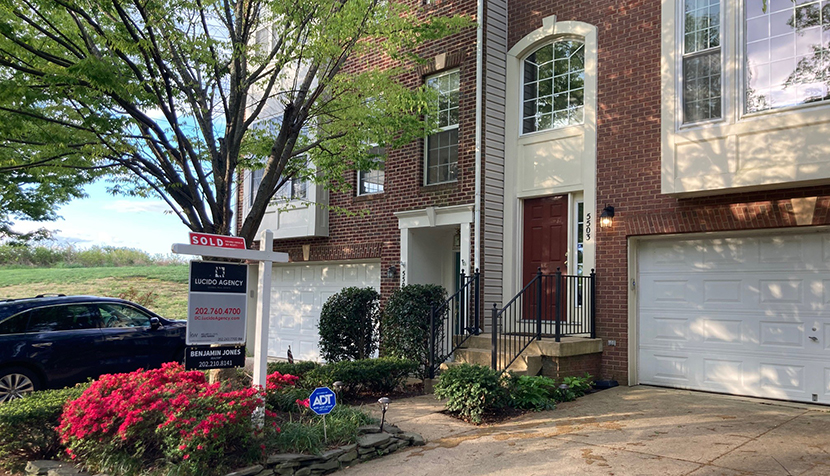
Existing Home Sales Fall 2nd Straight Month Amid Record-High Prices

Existing home sales fell in March, marking two consecutive months of declines, the National Association of Realtors reported yesterday, even as the market saw record-high home prices and gains.
The report said total existing-home sales https://www.nar.realtor/existing-home-sales fell by 3.7% from February to a seasonally adjusted annual rate of 6.01 million in March. Sales overall climbed year-over-year, up by 12.3% from a year ago (5.35 million in March 2020).
Single-family home sales decreased to a seasonally adjusted annual rate of 5.30 million in March, down 4.3% from 5.54 million in February, but up by 10.4% from one year ago. The median existing single-family home price jumped to $334,500 in March, up 18.4% from a year ago.
The report said existing condominium and co-op sales rose to a seasonally adjusted annual rate of 710,000 units in March, up 1.4% from February and up 29.1% from one year ago. The median existing condo price rose to $289,000 in March, an increase of 9.6% from a year ago.
While each of the four major U.S. regions experienced month-over-month drops, all four areas saw year-over-year gains in home sales. Sales in the South dropped by 2.9% to an annual rate of 2,700,000 in March, but improved by nearly 16% from a year ago. The median price in the South rose to $283,900, a 15.6% climb from a year ago. Sales in the West fell 8% in March to an annual rate of 1,270,000, but improved by 15.5% from a year ago. The median price in the West jumped to $493,300, up 16.8% from March 2020.
Sales in the Northeast fell by 1.3% to an annual rate of 760,000 from February, but improved by nearly 17% from a year ago. The median price in the Northeast jumped to $364,800, up 21.4% from a year ago. Sales in the Midwest declined 2.3% to an annual rate of 1,280,000 in March, but rose by 0.8% from a year ago. The median price in the Midwest rose to $248,200, a 13.5% increase from March 2020.
“We continue to see tight inventories,” said Joel Kan MBA Associate Vice President of Economic and Industry Forecasting. “We’re seeing multiple offers above listing prices. Inventory is an issue that has to be addressed in 2021.”
“The decline was slightly larger than expected and comes one month after extreme weather severely cut into economic activity in Texas and other parts of the South and Midwest,” said Mark Vitner, Senior Economist with Wells Fargo Securities, Charlotte, N.C. “Sales fell in all four regions of the country, and would have likely been higher if there were more homes available for sale. Higher home prices are also likely pushing some buyers to the sidelines.”
Vitner said the March existing home sales data confirm what anecdotal reports have suggested for some time—the housing market heated up well ahead of the rest of the economy, and prices have surged to record levels. “The surge in home prices reflects a historic imbalance in the supply and demand for housing,” he said. “Home sales turned up well before the economy began to improve, with record low mortgage rates and the transition to remote work and schooling setting off a race for more living space. The surge in demand came at a time that existing home inventories were already extraordinarily low, which set off bidding wars for what few listings were available.”
Vitner added there is “no question that year-over-year home price appreciation in the high teens is unsustainable. Wages and salaries are only set to rise by a fraction of that pace, and higher prices are likely sending some would-be buyers to the sidelines.”
However, Vitner noted the surge in home prices is also beginning to bring out sellers. Baby Boomers make up a disproportion share of existing homeowners, and many were understandably reluctant to put their homes on the market during the pandemic,” he said. “Now that more than half of the U.S. population has been vaccinated, we expect to see more homes come on the market.”
“Consumers are facing much higher home prices, rising mortgage rates and falling affordability, however, buyers are still actively in the market,” said Lawrence Yun, NAR’s chief economist. “The sales for March would have been measurably higher, had there been more inventory,” he added. “Days-on-market are swift, multiple offers are prevalent, and buyer confidence is rising.”
NAR reported the median existing-home price for all housing types in March jumped to $329,100, up 17.2% from March 2020 ($280,700), as prices increased in every region. March’s national price jump marks 109 straight months of year-over-year gains.
Total housing inventory at the end of March rose to 1.07 million units, up 3.9% from February’s inventory but down 28.2% from one year ago (1.49 million). Unsold inventory sits at a 2.1-month supply at the current sales pace, marginally up from February’s 2.0-month supply and down from the 3.3-month supply a year ago. Inventory numbers continue to represent near-historic lows. “Without an increase in supply, the society wealth division will widen with homeowners enjoying sizable equity gains while renters will struggle to become homeowners,” Yun said.
The report said properties typically remained on the market for 18 days in March, down from 20 days in February and from 29 days in March 2020. Eighty-three percent of the homes sold in March were on the market for less than a month.
First-time buyers represented 32% of sales in March, up from 31% in February but down from 34% in March 2020. Individual investors or second-home buyers purchased 15% of homes in March, down from 17% in February but up from 13% in March 2020. All-cash sales accounted for 23% of transactions in March, up from both 22% in February and from 19% in March 2020. Distressed sales represented less than 1% of sales in March, equal to February’s percentage but down from 3% in March 2020.
